1. Ranthambore National Park – Sawai Madhopur
Ranthambore National Park is a renowned wildlife sanctuary located in the Sawai Madhopur district of the Indian state of Rajasthan. The park is one of the largest national parks in northern India, covering an area of approximately 392 square kilometers. It is situated at the junction of the Aravalli and Vindhya hill ranges and is known for its rich biodiversity, historical significance, and the presence of the majestic Bengal tiger.

Key features of Ranthambore National Park:
- Wildlife: Ranthambore is famous for its population of Bengal tigers, and it is one of the best places in India to spot these elusive creatures in their natural habitat. Apart from tigers, the park is home to a diverse range of fauna, including leopards, sloth bears, wild boars, sambar deer, chital, Indian gazelles, and numerous species of birds.
- Landscape: The park boasts a varied topography, including grassy meadows, dry deciduous forests, lakes, and rocky hills. The Ranthambore Fort, a UNESCO World Heritage Site, is situated within the park and adds a historical touch to the landscape.
- Ranthambore Fort: This ancient fort, dating back to the 10th century, is located atop a hill within the national park. It offers panoramic views of the surrounding area and the park. The fort has historical significance and is a popular attraction for tourists visiting Ranthambore.
- Sawai Madhopur: The town of Sawai Madhopur serves as the gateway to Ranthambore National Park. It is well-connected by road and rail and provides accommodation options for visitors to the park.
- Safari Experience: Ranthambore offers both jeep and canter safaris for wildlife enthusiasts. These safaris provide an opportunity to explore the park and witness its diverse flora and fauna, with the highlight being the chance to spot tigers in their natural habitat.
- Best Time to Visit: The park is open to visitors from October to June, with the best time for tiger sightings considered to be during the dry season (April to June) when water sources are limited, and animals gather around the remaining water bodies.
- Conservation: Ranthambore National Park has been instrumental in the conservation efforts for the Bengal tiger, and various initiatives are in place to protect and preserve the park’s biodiversity.
Visiting Ranthambore National Park provides a unique opportunity to experience the beauty of nature, witness diverse wildlife, and explore the historical and cultural aspects of the region.
2. Sariska Tiger Reserve, Alwar
Sariska Tiger Reserve is a wildlife sanctuary located in the Alwar district of the Indian state of Rajasthan. Covering an area of around 881 square kilometers, it is known for its diverse flora and fauna, including the majestic Bengal tiger.
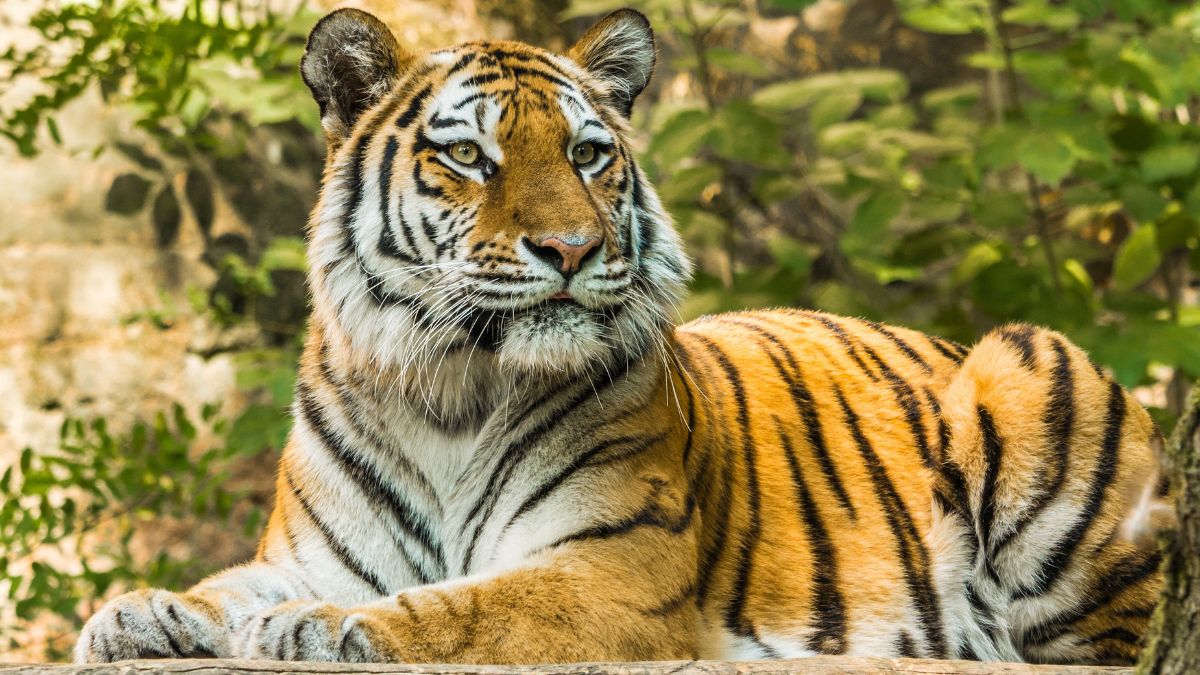
Here are key details about Sariska Tiger Reserve:
- Wildlife: Sariska Tiger Reserve is home to a variety of wildlife species, with the Bengal tiger being the flagship species. Other carnivores present in the reserve include leopards, jungle cats, striped hyenas, and wild dogs. The herbivore population includes sambar deer, chital, nilgai, four-horned antelope, and wild boars. Additionally, the reserve is rich in birdlife, with various species of eagles, vultures, and owls.
- Landscape: The topography of Sariska includes rocky landscapes, dry deciduous forests, and grasslands. The Aravalli Range runs through the sanctuary, adding to its scenic beauty. The Kankwari Fort, located within the reserve, is a historical structure that enhances the overall landscape.
- Kankwari Fort: The Kankwari Fort is an ancient structure within the reserve that has historical significance. It is associated with the imprisonment of Mughal Emperor Aurangzeb’s brother, Dara Shikoh.
- Sariska Palace: The Sariska Palace, located near the reserve, is a heritage hotel that was once the hunting lodge of the Maharaja of Alwar. It provides a unique accommodation option for visitors interested in experiencing the historical charm of the region.
- Jeep Safaris: Visitors can explore the reserve through jeep safaris that offer an opportunity to observe the wildlife in their natural habitat. These safaris are conducted by the forest department, and trained guides accompany visitors to enhance their wildlife-watching experience.
- Conservation Efforts: Sariska Tiger Reserve has faced challenges in the past, including the loss of its entire tiger population due to poaching. However, efforts have been made to reintroduce tigers into the reserve, and conservation initiatives aim to protect the remaining wildlife and their habitats.
- Best Time to Visit: The reserve is open to visitors throughout the year. However, the best time to visit is during the winter months (October to March) when the weather is pleasant, and wildlife sightings are more likely due to the animals congregating around water sources.
Sariska Tiger Reserve provides a unique opportunity for nature enthusiasts and wildlife lovers to witness the beauty of Rajasthan’s diverse ecosystems and experience the thrill of spotting iconic species in their natural environment.
3. Keoladeo National Park, Bharatpur
Keoladeo National Park, located in Bharatpur, Rajasthan, is a renowned bird sanctuary and a UNESCO World Heritage Site. Also known as Bharatpur Bird Sanctuary, it covers an area of approximately 29 square kilometers.
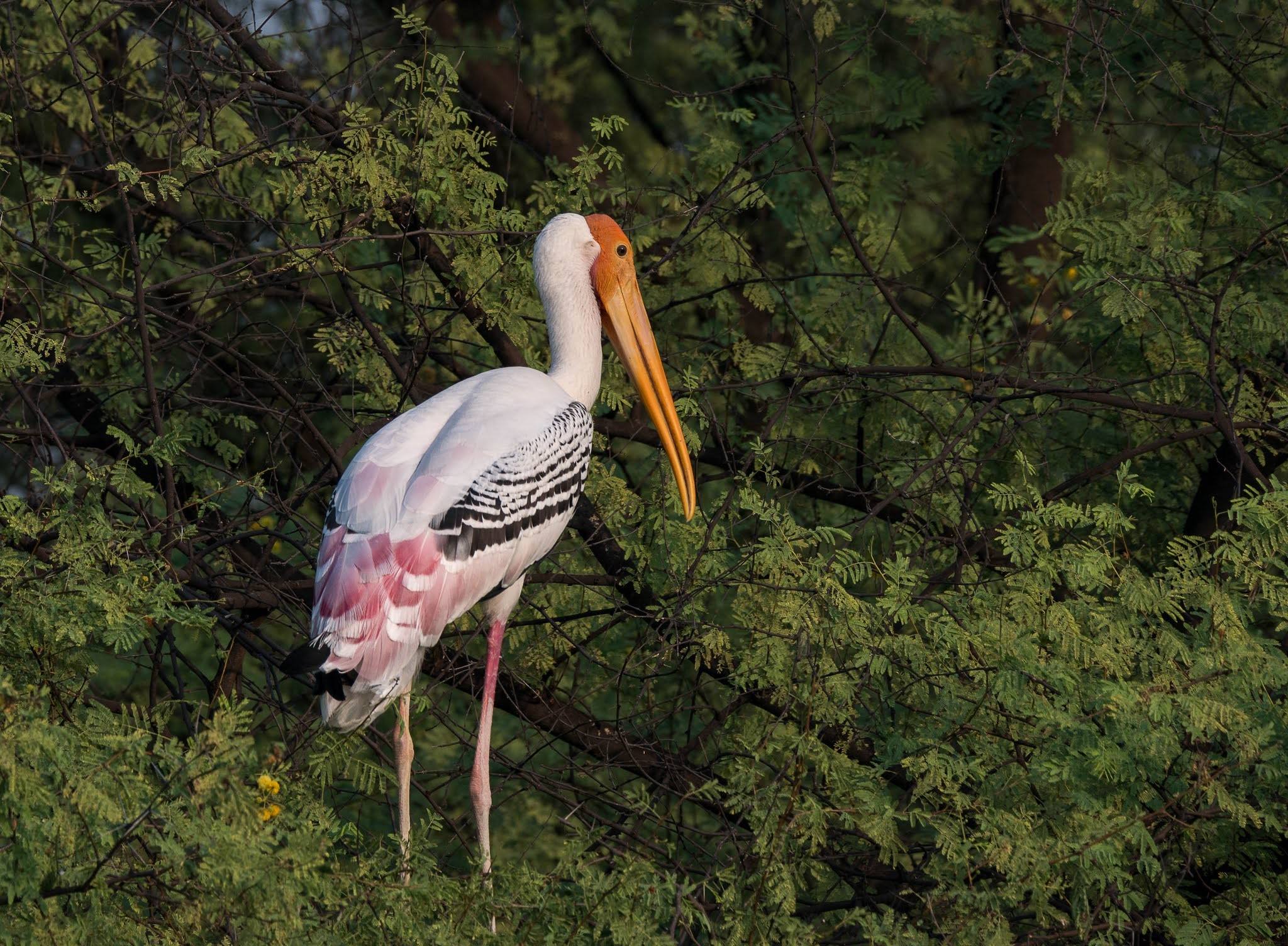
Here are key details about Keoladeo National Park:
- Biodiversity: Keoladeo National Park is primarily known for being a haven for avian species. It hosts a rich diversity of migratory and resident birds, making it a paradise for birdwatchers. Over 370 bird species have been recorded in the park, including waterfowl, raptors, warblers, and many more.
- Wetland Ecosystem: The park is characterized by a mosaic of wetlands, woodlands, and grasslands. It was originally a natural depression and was artificially created as a waterfowl hunting ground by the Maharaja of Bharatpur in the 18th century. The wetlands provide crucial habitat for a variety of water birds.
- Keoladeo Temple: The park derives its name from the ancient Keoladeo Temple dedicated to Lord Shiva, located within its boundaries. The temple adds a cultural and historical dimension to the park.
- Migratory Birds: Keoladeo National Park is a crucial wintering ground for several migratory bird species that travel here from places like Siberia, Central Asia, and Europe. The arrival of these birds, especially during the winter months, makes the park a vibrant and dynamic ecosystem.
- Siberian Cranes: The park was historically known for hosting the endangered Siberian cranes during their winter migration. However, in recent years, the number of Siberian cranes visiting the park has declined significantly.
- Flora: Apart from the avian diversity, the park is home to a variety of plant species, including aquatic plants, grasses, and trees. The vegetation provides nesting sites and roosting places for birds.
- Boat Rides and Rickshaw Tours: Visitors can explore the park on foot, by cycle, or through boat rides. Rickshaw tours, guided by knowledgeable local guides, are a popular and eco-friendly way to navigate the park, allowing tourists to get close to the birds without disturbing them.
- Best Time to Visit: The winter months, from October to March, are the ideal time to visit Keoladeo National Park. During this period, the weather is pleasant, and migratory birds flock to the park in large numbers.
- Conservation: Keoladeo National Park has been recognized for its conservation efforts, especially in the context of wetland conservation and the protection of avian biodiversity.
Keoladeo National Park is not only a paradise for bird enthusiasts but also a significant site for ecological conservation. Its unique blend of natural and cultural elements makes it a must-visit destination for those interested in the natural heritage of India.
4.Kumbhalgarh Wildlife Sanctuary, Kumbhalgarh
Kumbhalgarh Wildlife Sanctuary is a protected area situated in the Rajsamand district of the Indian state of Rajasthan, near the historic town of Kumbhalgarh. Covering an area of approximately 578 square kilometers, the sanctuary is known for its diverse flora and fauna, as well as the majestic Kumbhalgarh Fort, which is a UNESCO World Heritage Site.
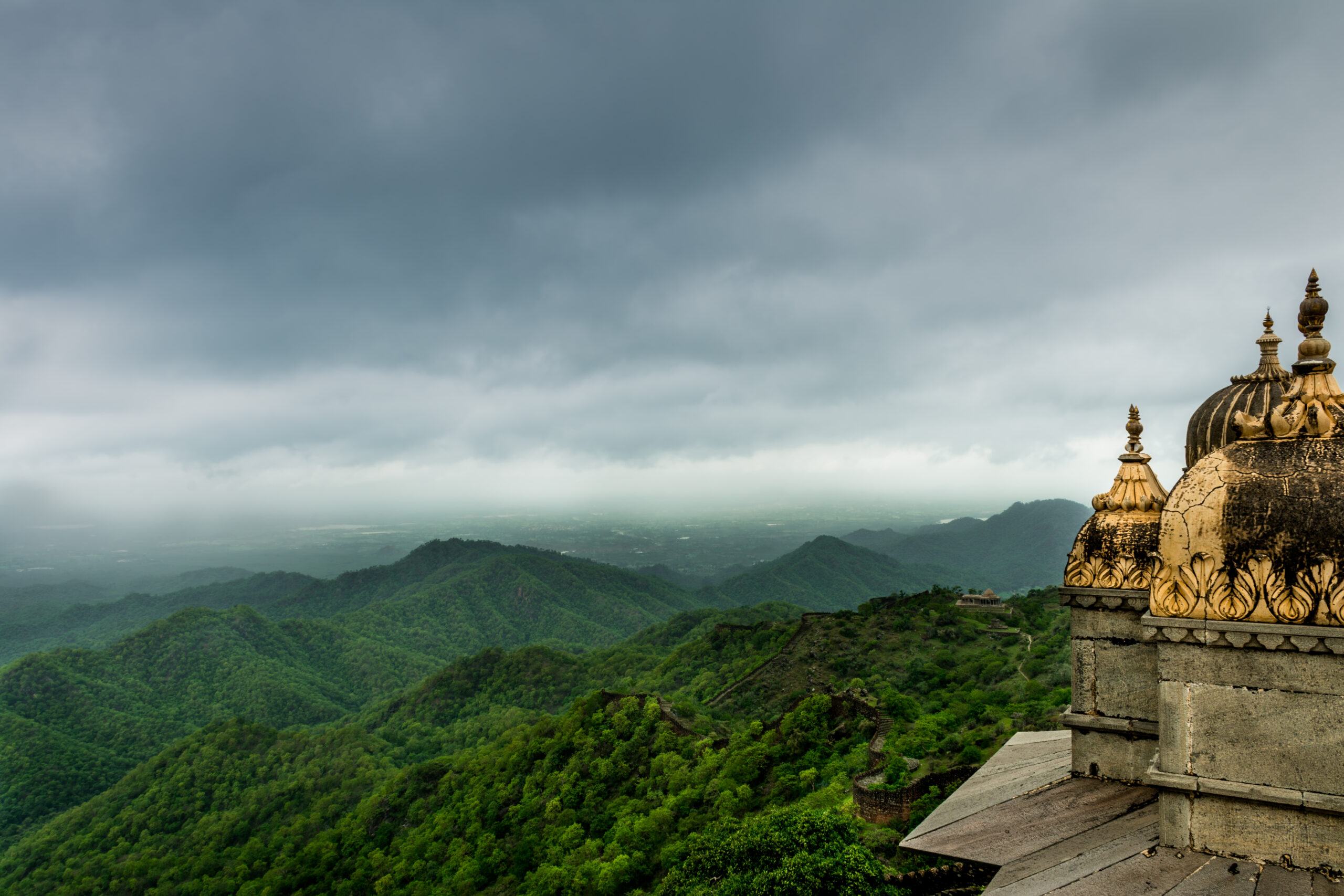
Here are key details about Kumbhalgarh Wildlife Sanctuary:
- Wildlife Diversity: The sanctuary is home to a rich variety of wildlife species. Some of the notable inhabitants include leopards, wolves, sloth bears, jackals, hyenas, chinkaras, and various species of deer such as the Indian gazelle, sambar, and spotted deer. The avian population is also diverse, with numerous species of birds found in the sanctuary.
- Kumbhalgarh Fort: Dominating the landscape, Kumbhalgarh Fort is a historic marvel that was built in the 15th century by Rana Kumbha. It is renowned for having one of the longest walls in the world, extending over 38 kilometers. The fort is an integral part of the sanctuary and adds a cultural and historical dimension to the overall experience.
- Flora and Landscape: The sanctuary features a varied landscape, including rugged hills, steep slopes, and valleys. The vegetation comprises dry deciduous forests with a mix of trees such as teak, flame of the forest, and bamboo. The terrain provides a suitable habitat for the diverse wildlife that inhabits the region.
- Kumbhalgarh Wildlife Sanctuary Safari: Visitors can explore the sanctuary through jeep safaris, which offer an opportunity to witness the wildlife in its natural habitat. The safaris are organized by the forest department, and knowledgeable guides accompany visitors to enhance their wildlife-watching experience.
- Conservation Efforts: Kumbhalgarh Wildlife Sanctuary plays a crucial role in the conservation of biodiversity in the region. Conservation initiatives focus on protecting the natural habitats, preserving the wildlife corridors, and ensuring the sustainable coexistence of humans and wildlife.
- Best Time to Visit: The sanctuary is open to visitors throughout the year. However, the winter months (October to March) are considered the best time to visit, as the weather is pleasant, and wildlife sightings are more frequent during this period.
Kumbhalgarh Wildlife Sanctuary offers a unique blend of wildlife, history, and natural beauty. Visitors can experience the thrill of encountering diverse fauna while exploring the picturesque landscapes of the sanctuary, making it a must-visit destination for nature enthusiasts and history lovers alike.
5.Darrah Wildlife Sanctuary, Kota
Darrah Wildlife Sanctuary is a protected area located in the Kota district of the Indian state of Rajasthan. Spanning an area of about 250 square kilometers, the sanctuary is known for its diverse flora and fauna, offering a haven for nature lovers and wildlife enthusiasts.

Here are some key details about Darrah Wildlife Sanctuary:
- Flora: The sanctuary is characterized by a varied landscape that includes tropical dry deciduous forests, rugged hills, and plateaus. The vegetation consists of a mix of dry deciduous trees, shrubs, and grasslands. The sanctuary is home to a variety of plant species adapted to the arid conditions of the region.
- Wildlife: Darrah Wildlife Sanctuary is inhabited by a range of wildlife species, including leopards, sambar deer, chital, Indian wild boar, langurs, and various species of reptiles. The sanctuary is also home to a diverse avian population, making it a paradise for birdwatchers.
- Lakes and Waterbodies: The presence of lakes and waterbodies within the sanctuary attracts wildlife, especially during the dry seasons. These water sources provide a vital lifeline for the resident fauna and serve as excellent spots for wildlife observation.
- Darrah Fort: Situated within the sanctuary, Darrah Fort is an ancient structure with historical significance. The fort adds to the scenic beauty of the landscape and provides a unique blend of wildlife and cultural heritage.
- Jeep Safaris: Visitors can explore the sanctuary through guided jeep safaris, allowing them to traverse the rugged terrain and witness the diverse wildlife. The sanctuary’s topography and the chance to spot elusive animals make these safaris a popular attraction.
- Accessibility: Darrah Wildlife Sanctuary is easily accessible from Kota, a prominent city in Rajasthan. The sanctuary’s proximity to Kota makes it a convenient destination for both local and out-of-town visitors.
- Conservation: Like many wildlife sanctuaries, Darrah plays a crucial role in the conservation of biodiversity in the region. Efforts are made to protect the natural habitat, control human activities, and raise awareness about the importance of preserving the sanctuary’s ecological balance.
- Best Time to Visit: The sanctuary is typically open to visitors throughout the year. However, the winter months (October to March) are considered the best time to visit, as the weather is more comfortable, and wildlife sightings are enhanced.
Darrah Wildlife Sanctuary offers a serene and off-the-beaten-path experience for those seeking to explore the natural beauty and wildlife diversity of Rajasthan. It provides a unique opportunity to connect with nature and appreciate the conservation efforts in place to protect the region’s rich biodiversity.
6.Mount Abu Wildlife Sanctuary, Mount Abu
Mount Abu Wildlife Sanctuary is situated in the Aravalli Range in the Sirohi district of the Indian state of Rajasthan. Covering an area of approximately 288 square kilometers, it is the only hill station in Rajasthan and provides a unique habitat for a diverse range of flora and fauna.
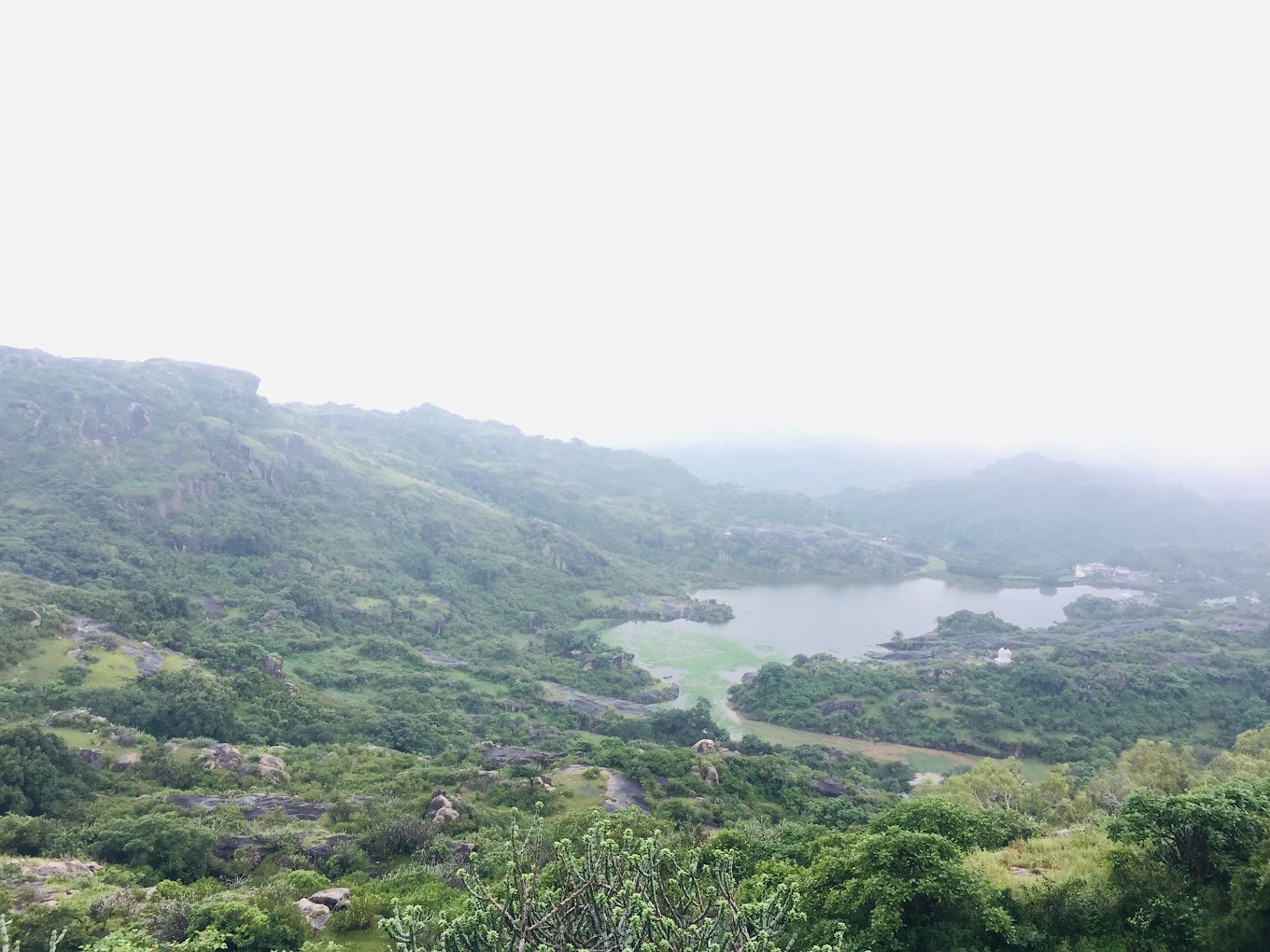
Here are some key details about Mount Abu Wildlife Sanctuary:
- Geography and Landscape: Mount Abu, at an elevation of about 1,220 meters above sea level, is the highest point in the Aravalli Range. The sanctuary encompasses a mix of rocky hills, dense forests, and lush green valleys, creating a diverse and picturesque landscape.
- Flora: The sanctuary is rich in floral diversity, with a variety of plant species adapted to the hilly terrain. The forests include evergreen trees, conifers, and flowering plants. Bamboo groves are also present in certain areas.
- Fauna: Mount Abu Wildlife Sanctuary is home to a diverse range of wildlife, including various species of mammals, birds, and reptiles. Mammals in the sanctuary include the Indian leopard, sambar deer, wild boar, langur, Indian fox, and more. The sanctuary is a haven for birdwatchers, with a plethora of bird species such as the grey junglefowl, crested serpent eagle, and various migratory birds.
- Nakki Lake: Nakki Lake, located within the sanctuary, is a popular tourist attraction and a vital water source for the local wildlife. The lake is surrounded by hills and offers scenic views, making it a serene spot for visitors.
- Treks and Trails: The sanctuary features several trekking trails that allow visitors to explore its natural beauty and observe wildlife in their natural habitat. Hiking to Guru Shikhar, the highest peak in the Aravalli Range, is a popular activity for those seeking panoramic views.
- Guru Shikhar: Guru Shikhar, situated within the sanctuary, is not only the highest point in the Aravalli Range but also a site with a temple dedicated to Guru Dattatreya. The trek to Guru Shikhar provides breathtaking views of the surrounding hills and valleys.
- Visitor Facilities: The sanctuary provides facilities for nature enthusiasts, including trekking routes, viewpoints, and information centers. Forest department guides are available for those interested in exploring the sanctuary and learning about its biodiversity.
- Best Time to Visit: The ideal time to visit Mount Abu Wildlife Sanctuary is from November to March when the weather is pleasant, and wildlife sightings are more likely.
Mount Abu Wildlife Sanctuary stands out as a unique ecological gem in the arid landscape of Rajasthan, offering a refreshing retreat for nature lovers and adventure seekers. The combination of diverse flora, fauna, and scenic landscapes makes it a must-visit destination in the region.
7.Bandh baretha, Bharatpur

- Location: Bandh Baretha wildlife Sanctuary is situated near the village of Baretha in the Bharatpur district of Rajasthan.
- Baretha Dam: The dam was constructed primarily for water storage and irrigation purposes. It plays a crucial role in providing water for agriculture in the surrounding areas.
- Wildlife Sanctuary: The area is known for its rich avian population and is recognized as a wildlife sanctuary. It attracts various migratory birds, especially during the winter months, making it a popular destination for birdwatchers.
- Bird Species: The sanctuary is home to a diverse range of bird species, including waterfowl, waders, and other migratory birds. The presence of the dam’s water body creates an ideal habitat for these avian visitors.
- Flora and Fauna: Apart from the birdlife, the surrounding region features a mix of vegetation, and some wildlife species, such as Nilgai (blue bull) and other small mammals, can be observed in the area.
- Photography and Bird Watching: Band Baretha Dam is a haven for nature photographers and bird enthusiasts. The serene surroundings and the opportunity to observe a variety of birds make it a picturesque location for such activities.
- Accessibility: The dam is accessible by road, and visitors can reach it from Bharatpur or nearby towns. It’s a peaceful spot for those looking to spend some time in nature away from the bustling city life.
When visiting Band Baretha Dam, it’s advisable to check the current regulations and conditions, as well as any specific guidelines provided by local authorities. Additionally, the best time to visit for birdwatching is typically during the winter months when migratory birds flock to the region.
8.Sita Mata Wildlife Sanctuary, Pratapgarh
Sita Mata Wildlife Sanctuary is a defended area located in the Pratapgarh quarter of the Indian state of Rajasthan. Gauging over 422 square kilometers, the sanctuary is named after Sita, the central womanish character in the Hindu grand Ramayana, and is known for its different foliage, fauna, and scenic geographies.
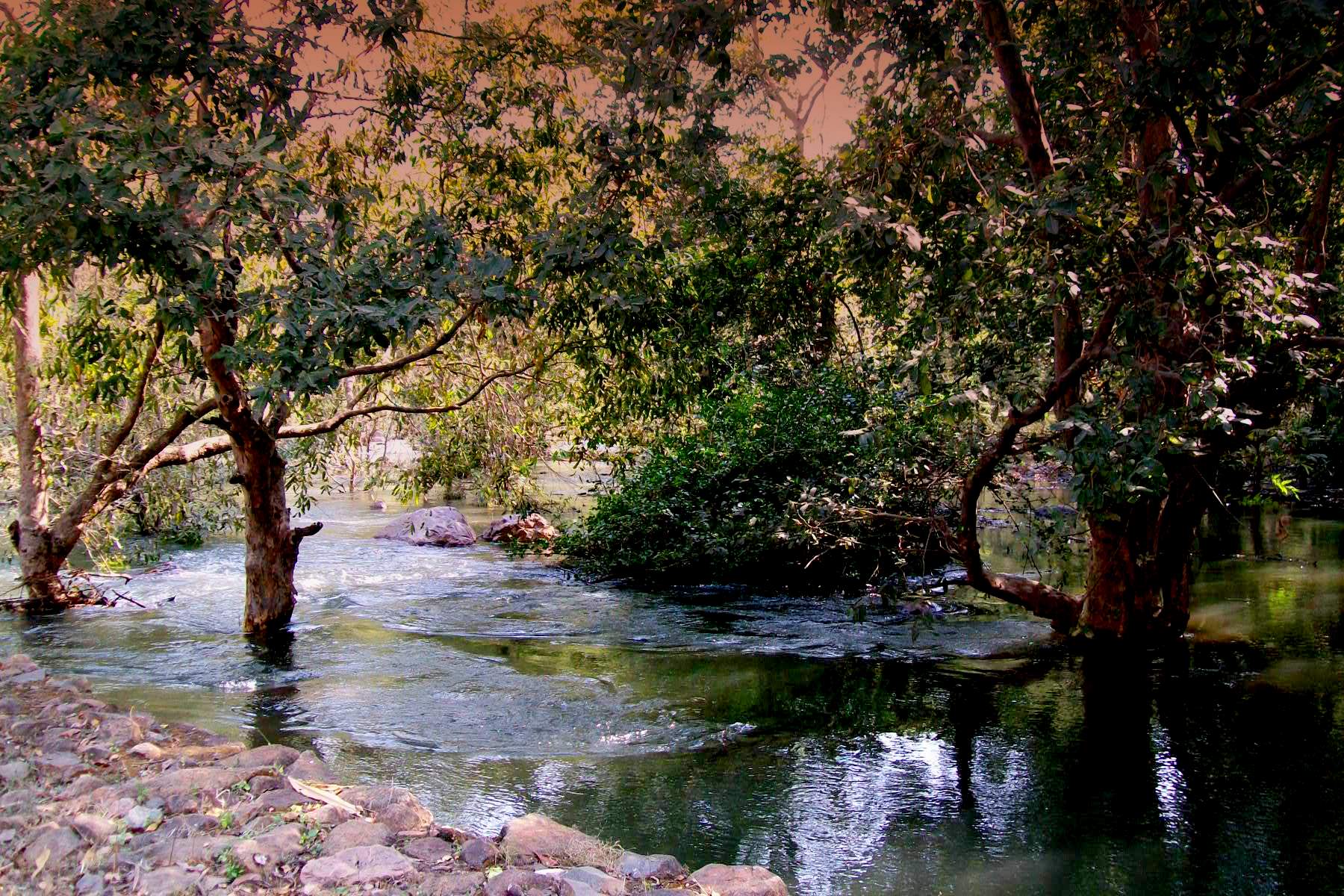
- Flora : The sanctuary is characterized by a variety of foliage, including dry evanescent timbers, mixed timbers, and champaigns. The different foliage includes species like teak, salar, tendu, bamboo, and colorful medicinal shops, creating a rich and vibrant ecosystem.
- Wildlife: Sita Mata Wildlife Sanctuary is home to a different range of wildlife, including leopard, jungle cat, hyena, fox, porcupine, and several species of deer similar as sambar, chital, and wild boar. The sanctuary is also known for its avian population, making it a paradise for birdwatchers.
- Landscape: The sanctuary’s geomorphology includes hilly terrains, mesas, and mooching aqueducts. The scenic beauty of the geography, combined with the lush verdure, enhances the overall experience for callers.
- Religious Significance: piecemeal from its ecological significance, Sita Mata Wildlife Sanctuary holds religious significance. There are several tabernacles within the sanctuary devoted to Sita and other divinities, attracting pilgrims and excursionists likewise.
- Waterbodies: The sanctuary is dotted with small waterbodies, which serve as pivotal water sources for the resident wildlife. These waterbodies also contribute to the overall biodiversity of the region and give openings for wildlife observation.
- Machiya Safari Park : Located within the sanctuary, Machiya Safari Park is a popular spot for callers. It offers installations for wildlife viewing, picnics, and nature walks. The demesne provides a near look at the natural beauty and biodiversity of the sanctuary.
- Availability: Sita Mata Wildlife Sanctuary is well- connected by road, and callers can pierce it from near municipalities similar as Pratapgarh. The sanctuary’s availability makes it a doable destination for nature suckers and excursionists.
- Conservation: The sanctuary plays a pivotal part in the conservation of biodiversity in the region. Conservation sweats are concentrated on guarding the natural niche, controlling mortal conditioning, and raising mindfulness about the significance of conserving the sanctuary’s ecological balance.
- Time to Visit: The sanctuary is open to callers throughout the time, but the downtime months( October to March) are considered the stylish time to visit. During this period, the rainfall is affable, and wildlife sightings are more likely.
Sita Mata Wildlife Sanctuary offers a unique mix of natural beauty, biodiversity, and artistic significance. It provides callers with the occasion to explore a different range of foliage and fauna while passing the serenity of the sanctuary’s graphic geographies.
9. Kaila Devi Wildlife Sanctuary, Karauli
Kaila Devi Wildlife Sanctuary is a protected area situated in the Karauli district of the Indian state of Rajasthan. Covering an approximate area of 676 square kilometers, the sanctuary is named after the Kaila Devi Temple, which is a significant religious site located within its boundaries.
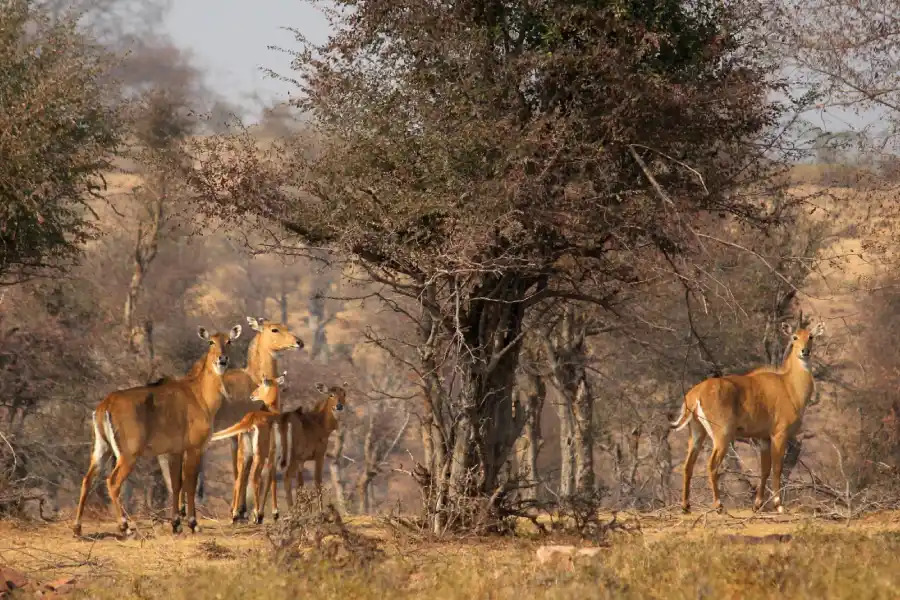
Here are some key details about Kaila Devi Wildlife Sanctuary:
- Flora and Fauna:
– Flora: The sanctuary features a diverse range of vegetation, including dry deciduous forests, grasslands, and shrubs. The flora is adapted to the arid climate of the region.
– Fauna: Kaila Devi Wildlife Sanctuary is home to various wildlife species, including leopards, sloth bears, striped hyenas, sambar deer, chital, nilgai, and a variety of bird species. The sanctuary’s rich biodiversity attracts nature enthusiasts and wildlife photographers.
- Kaila Devi Temple: The sanctuary is named after the Kaila Devi Temple, dedicated to the goddess Kaila Devi. The temple holds immense religious significance and is a major pilgrimage site, attracting devotees from the region and beyond. The temple is situated on the banks of the Kalisil River within the sanctuary and adds a cultural and spiritual dimension to the natural landscape.
- Topography: The terrain of Kaila Devi Wildlife Sanctuary is characterized by hills, valleys, and plateaus. The sanctuary’s landscape provides a variety of habitats for different wildlife species.
- Bird Watching: The sanctuary is a haven for birdwatchers, with numerous resident and migratory bird species. Birdwatching enthusiasts can spot birds like the Indian roller, vulture, eagle, and various waterfowl in and around the sanctuary.
- Accessibility: Kaila Devi Wildlife Sanctuary is accessible from Karauli, which is well-connected by road. The sanctuary’s proximity to Karauli makes it a convenient destination for both local and out-of-town visitors.
- Conservation Efforts: Conservation initiatives are in place to preserve the biodiversity of the sanctuary. These efforts include habitat protection, anti-poaching measures, and community involvement to promote sustainable conservation practices.
- Best Time to Visit: The sanctuary is usually open to visitors throughout the year. However, the winter months (October to March) are considered the best time to visit, as the weather is pleasant, and wildlife sightings are more likely.
Kaila Devi Wildlife Sanctuary offers a blend of natural beauty, cultural heritage, and spiritual significance. It provides an opportunity for visitors to explore the diverse ecosystems of Rajasthan, witness wildlife in their natural habitat, and experience the cultural richness associated with the Kaila Devi Temple.
10. National Chambal Wildlife Sanctuary, Kota
The National Chambal Wildlife Sanctuary is a protected area located on the banks of the Chambal River, spanning across the states of Uttar Pradesh, Madhya Pradesh, and Rajasthan in northern India. The sanctuary is renowned for its unique and diverse ecosystem, serving as a crucial habitat for several endangered species.
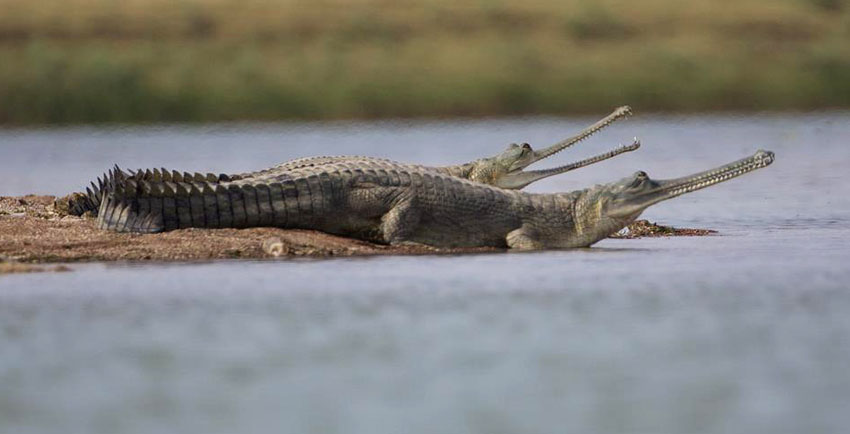
Here are some key details about the National Chambal Wildlife Sanctuary near Kota:
- Geography and Landscape: The sanctuary covers an extensive area along the Chambal River, known for its undisturbed and pristine landscapes. The region comprises a mosaic of riverine habitats, sandbanks, mudflats, and ravines, creating a diverse and rich environment.
- Biodiversity: National Chambal Wildlife Sanctuary is particularly famous for its efforts in conserving and protecting three critically endangered species – the Gharial (Gavialis gangeticus), the Red-crowned Roof Turtle (Batagur kachuga), and the Gangetic River Dolphin (Platanista gangetica). The sanctuary is also home to a variety of other wildlife, including mugger crocodiles, smooth-coated otters, various species of turtles, and a diverse avian population.
- Gharials: The Chambal River is one of the last remaining strongholds for the Gharial, a fish-eating crocodile with a distinctive long, narrow snout. The sanctuary plays a crucial role in the conservation of this species, providing a protected habitat for breeding and nesting.
- Conservation Initiatives: The sanctuary has been actively involved in conservation initiatives, including community-based conservation programs, research, and monitoring of wildlife populations. Efforts are made to raise awareness about the importance of preserving the Chambal ecosystem.
- Boat Safaris: Visitors to the National Chambal Wildlife Sanctuary can explore its diverse habitats through boat safaris on the Chambal River. These safaris provide an opportunity to spot Gharials, crocodiles, dolphins, and a variety of bird species. The riverine setting adds a unique dimension to the wildlife viewing experience.
- Migratory Birds: The sanctuary is a haven for migratory birds during the winter months, attracting species such as the Indian skimmer, black-bellied tern, and various species of waterfowl. Birdwatchers flock to the area to observe and photograph these avian visitors.
- Accessibility: The sanctuary is easily accessible from Kota, which serves as a gateway for visitors. Kota is well-connected by road and rail, making it convenient for tourists to reach the National Chambal Wildlife Sanctuary.
- Best Time to Visit: The winter months, from November to March, are considered the best time to visit when the weather is pleasant, and wildlife sightings, especially of migratory birds, are at their peak.
The National Chambal Wildlife Sanctuary stands as a testament to successful conservation efforts and provides a unique opportunity for nature enthusiasts to witness and appreciate the diverse flora and fauna that thrive along the Chambal River.



